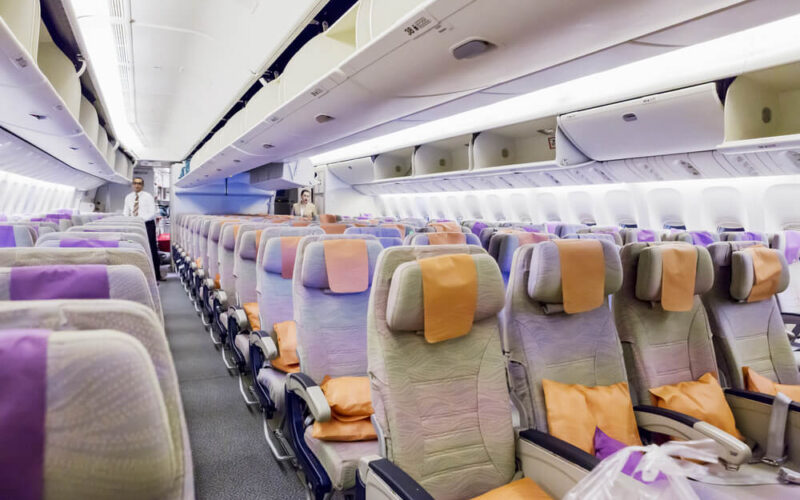Whenever passengers choose to fly and are picking their travel itineraries, the attractiveness of an airline offer relies on four main pillars: price, travel time, loyalty benefits and, of course, comfort. While the seating arrangement on board, including the type of seats a carrier has chosen to fit its aircraft with matters a lot, cabin pressurization is essential to ensure passenger comfort and safety.
After all, travelers would not be very comfortable if due to the lack of oxygen they would pass out mid-flight.
Aircraft cruise at the altitude range of anywhere between 35,000 and 42,000 feet, as the altitude lets pilots avoid bad weather down low and any potential landscape obstacles. Furthermore, aircraft are much more efficient at that altitude: as it increases, the higher the plane is, the thinner the air, which reduces drag and in turn, increases the fuel efficiency.
But, how does the aircraft cabin get the pressurized air?
Pressurizing and refreshing the air in an aircraft cabin
Whenever an aircraft climbs and reaches its cruise altitude, the atmospheric pressure drops down to about four Pounds per square inch (psi), while the pressure on board remains at about 11 psi, simulating the atmosphere of around 8,000 feet inside the aircraft. While theoretically the pressure inside the aircraft could be higher, it would lead to a high differential pressure, which in turn, could potentially result in doors or windows saying goodbye and departing the plane’s fuselage and possibly causing fatal injuries to the passengers.
To control the pressure inside the cabin, the aircraft’s systems automatically open up an outflow valve. For example, the Boeing 737 has an outflow valve at the back of the narrow-body, just below the aircraft’s door:

The valve works in a fairly simple way: if more air is needed inside the cabin, the valve closes. If there is too much air inside the cabin, the valve opens and air departs the aircraft. In an emergency situation, for example during a rapid descent, the difference in pressure inside and outside the aircraft could be too high: in a negative differential situation, a spring-loaded negative pressure relief valve opens inwards, letting air into the cabin to even out the difference. In a positive differential scenario, whereupon the aircraft has too much air inside it, a pressure safety relief valve opens up and lets it all out.
However, how does air reach the cabin of an aircraft?
Bleeding air
The most popular way to introduce air into the cabin is to use bleed air from the engines. Modern jetliners are mounted with engines that ingest air via the engine fan which goes towards the compressor to conduct the fuel ignition process or exits towards the back of the aircraft. Bleed air, which is sourced from the compressor stage, enters the cabin to pressurize it. Moreover, bleed air can also be used to start the engines, provide air for hydraulic pumps or for ice protection; while the cabin gets lower temperature air, the anti-ice systems get hot air to prevent ice from forming on the wings, for example.
However, changes might be coming to the bleed air system. For example, the Boeing 787 Dreamliner uses no-bleed systems in its engines. Bleed air, according to the manufacturer, is only utilized to protect the engine cowls from ice forming on them and to pressurize the hydraulic reservoirs. To start the engines, pressurize the cabin and to provide anti-ice protection to the wings, Boeing utilizes electrical systems. On a Dreamliner, cabin pressure is provided by electrically driven compressors, while fresh air is infused from dedicated cabin air inlets.
“One of the advantages of the no-bleed electrical systems architecture is the greater efficiency gained in terms of reduced fuel burn — the 787 systems architecture accounts for predicted fuel savings of about 3 percent. The 787 also offers operators operational efficiencies due to the advantages of electrical systems compared to pneumatic systems in terms of weight and reduced lifecycle costs,” Boeing describes the Dreamliner’s system.

